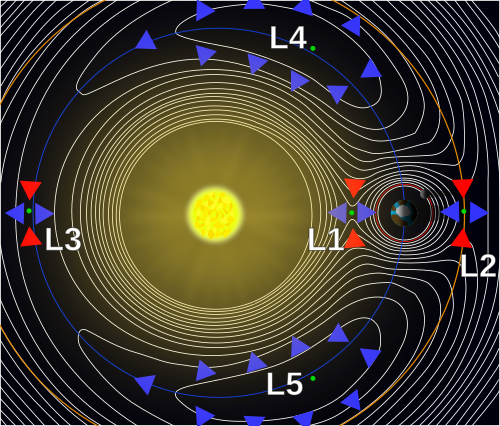http://en.wikipedia.org/wiki/Doppelg%C3%A4nger_%281969_film%29 wrote:
<<Doppelgänger is a 1969 British science-fiction film directed by Robert Parrish. Outside Europe, it is known as Journey to the Far Side of the Sun. In the film, a joint European-NASA mission through the Solar System to investigate a planet in a mirror position to Earth behind the Sun ends in disaster with the death of one astronaut. His partner realises that the planet is a perfect parallel duplicate of Earth, where all aspects of life run in reverse.
Plot: On a journey through the Solar System in 2069, the unmanned Sun Probe of the EUROpean Space Exploration Council (EUROSEC) locates a planet inside the orbital path of Earth that is positioned behind the Sun. The traitorous Dr Hassler has been transmitting Sun Probe flight data to a rival power in the East, but is detected and shot dead at the hands of Security Chief Mark Neuman. In the aftermath of the intelligence leak, EUROSEC director Jason Webb convinces NASA representative David Poulson that the West must launch a mission to investigate the unknown planet before Hassler's associates. With no financial support from EUROSEC member states France and Germany, Webb obtains majority funding from NASA and British astrophysicist Dr John Kane, head of the Sun Probe project, and American astronaut Colonel Glenn Ross are assigned to the mission.
Launched from the EUROSEC Space Centre in Portugal, Kane and Ross are connected to "Heart Lung Kidney" machines that maintain them in stasis for a six-week round trip onboard their Phoenix spacecraft. Revived after three weeks in the orbit of the unknown planet, the astronauts decide to land after surface scans fail to provide proof of extraterrestrial life. Descending through the atmosphere, an electrical storm damages their Dove lander shuttle, which crashes in the Ulan Bator region of Mongolia. When an air-sea rescue unit returns Ross and Kane, the latter fighting critical injuries, to the Space Centre in Portugal, it seems clear that the Phoenix mission has been terminated after less than a month and that the astronauts have returned to Earth.
Neuman and EUROSEC official Lise Hartman interrogate Ross, but he denies that he aborted the mission. Soon after, Kane dies from the injuries that he sustained in the crash. Eventually, Ross puts together a number of clues that lead him to the disturbing conclusion that he is not home, but indeed on the unknown planet — a "Counter-Earth" that is a mirror image of his. Colleagues at EUROSEC, and his partner, Sharon, are perplexed at his claims that print on signs and labels, lanes on roads and the plan of his apartment are all reversed. However, Webb is convinced of the truth when Ross reads text as reflections in a mirror and X-rays from a post-mortem examination on Kane reveal that the arrangement of his internal organs opposes the normal human biological structure for this planet.
Ross suggests that the two Earths are subject to the same events, meaning that his parallel image is living through identical experiences on the other side of the Sun. Webb agrees that he should return to Phoenix and then his home planet. All the components of the replacement shuttle are manufactured to be compatible with the reversed technologies of the orbiting Phoenix.
Included in the modifications is the inverse-polarisation of the electric circuits, although it is not known for certain that the divergences between the Earths extend to the direction of electric current. The shuttle is named Doppelganger, meaning a duplicate of a person or object in the original German. Lifting off, Ross attempts to dock with Phoenix to retrieve its flight recorder.
However, the shuttle hardware malfunctions, indicating that current is constant on both Earths after all. The communications link to EUROSEC is lost as Doppelganger detaches from Phoenix, hurtling through the atmosphere towards the Space Centre with Ross unable to disengage automatic landing control. A remote disablement command comes too late, and Doppelganger crashes into a second mission rocket. Ross is incinerated in the collision, which triggers a chain reaction that in turn obliterates the Space Centre, most of the EUROSEC personnel, and all records of Ross's presence on the parallel Earth.
Decades later, a bitter Webb, long since dismissed from EUROSEC, has been admitted to a nursing home. In his dementia, the aged man sees his reflection in a mirror mounted in front of a window. Attempting to touch his parallel self, he crashes into the mirror, dying instantly from his injuries.>>

